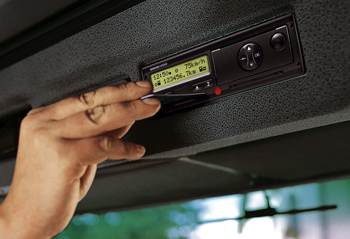More onerous tacho EU requirements on drivers!
10 May 2022
What’s happened?
The Government appears to have “snuck in” the most onerous EU requirements on drivers since the tachograph was first invented, and the COVID crisis seems to have provided the perfect cover!
In just 20 days back in August 2020, the Secretary of State (with the EU) brought into force a requirement, which applies to all EU regulated drivers (regardless of how little EU-regulated driving they undertake), and which the DVSA interpret as a requirement on every driver to record every minute of every hour of every day – whether driving, undertaking other work, taking daily or weekly rest, , on holiday or even on sick leave. That record must be made using one of only three legally recognised formats – a tachograph chart, the driver’s digi-card or a printout from the digital device (log books, timesheets and other forms of record are not permitted).
From January 2022, the DVSA have changed their approach to these rules and have been enforcing them both at the roadside and during operator investigations. Further, the Traffic Commissioners are now referring to these obligations – and are exploring operators’ systems for effectively managing compliance with the rules – at Public Inquiries and Preliminary Hearings.
Nothing at all has been done to raise awareness of the new requirements. . Apart from a subtle change to the DVSA’s online guidance documents (GV262 and PSV375), which was not specifically highlighted, we can find no evidence of any attempt to warn and educate the commercial vehicle sectors and the hundreds of thousands of affected drivers.
Furthermore, this change appears to have been brought in bypassing the trade associations in what must be the fastest non-urgent profound legislative change from the EU ever.
Normally, EU legislation comes into force after a long period of preparation and negotiation. Even then, there is normally a period of about 2 years between the publication of a new EU regulation and it entering into force. In this case, the draft regulation was issued on 15 July, published on 31 July and in force a mere 20 days later on 20 August 2020.
Why are the changes such an issue?
There are a huge number of impractical implications to these new recording requirements.
As a minimum, every driver (regardless of how little EU-regulated driving they undertake) has to have their current tachograph/digital record and records for the previous 28 calendar days available for production at the roadside. These records now include the 24 hours a day, 7 days a week record required in accordance with the DVSA interpretation of the August 2020 changes. Immediately, therefore, all drivers need to record their daily rest every day and their weekly rest, holidays and sickness absence (in one of the three legally recognised formats).
The implications become far more complex when considering the position of occasional drivers (e.g. your part-time drivers who may also work in a shop, or who may undertake non-EU regulated driving for another employer) – they now have the huge burden of retrospectively recording their last 28 days as a manual entry, printout(s) or analogue chart(s). These need to record – accurately(!) – all the other work, breaks, daily and weekly rest, holidays and sickness absence for the entire period since they last undertook any EU-regulated driving!
Yet more complex again is the position for those drivers undertaking a combination of EU/non-EU activity (particularly in, for example, the removals and passenger transport sectors) or the Transport Manager who only drives very occasionally through the year typically only to rescue a driver who has run out of hours and will have no idea in advance of when they might be required to drive.
Think too about the new driver starting his or her first day … they now have to have at least 28 days’ retrospective records of their activities in one of the three legally prescribed formats. So too will any agency driver you engage.
We understand that various Trade Associations are now aiming to discuss the requirements with the Government but, in the meantime, there must be nearly 100% non-compliance with the new rules through genuine lack of awareness across the industry.
What should you do now?
There is a longstanding requirement on employers of drivers to train them in the requirements and therefore all operators need to urgently familiarise themselves with the new rules and set up training for drivers on the new requirements. Indeed, even newly qualified drivers are not, in our experience, being trained in respect of these new obligations – which is hardly surprising given there has been no DVSA or DfT publicity at all.
Employers also need to make sure – through analysis and appropriate monitoring and management – that their drivers are complying with the rules and making the appropriate manual entries/print-outs – this itself is no easy task and it is incumbent on all operators to understand how they can monitor this through their analysis software (breaches of the new record keeping requirements will not – as we understand it – appear on a driver’s normal infringement report).
Backhouse Jones are offering a 2.5 hour e-Training session, delivered in conjunction with Gordon Humphreys of Foster Tachographs and Transport Compliance (the UK’s leading tachograph expert), on the new record keeping obligations and the steps operators should take to train, implement, monitor and manage the changes appropriately. We examine the rule changes in detail, the record keeping obligations for drivers and how different categories of driver (full time, part time, occasional drivers, new drivers etc.) will be affected, the impact of the changes on your analysis of drivers’ hours and tachograph records and the implications for drivers, operators and transport managers of getting it wrong. These training courses have been, and will continue to be, run throughout the year. You can find further details of these here. Alternatively, if you would like further information, please contact our Regulatory team on 01254 828300.
